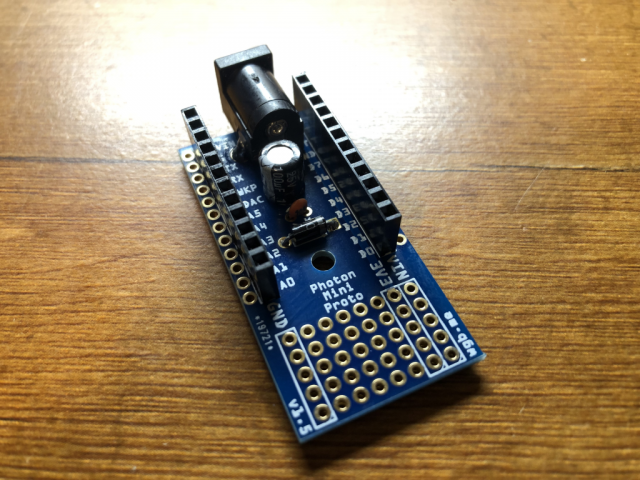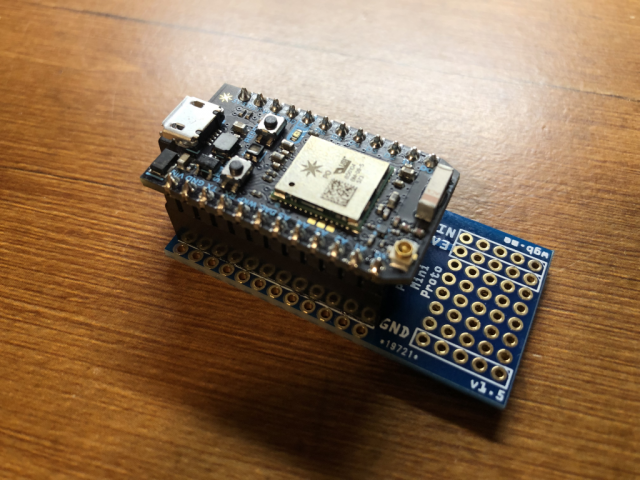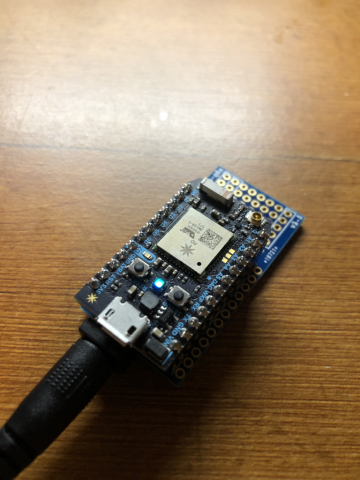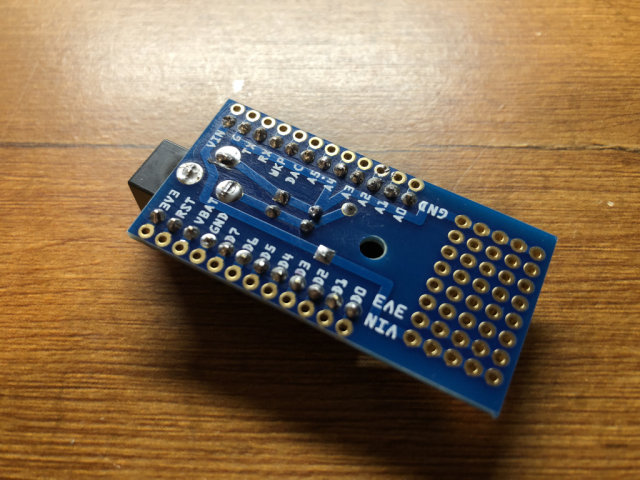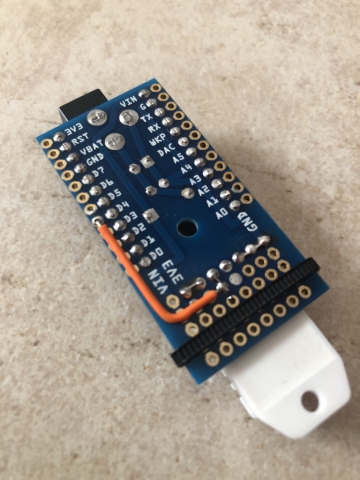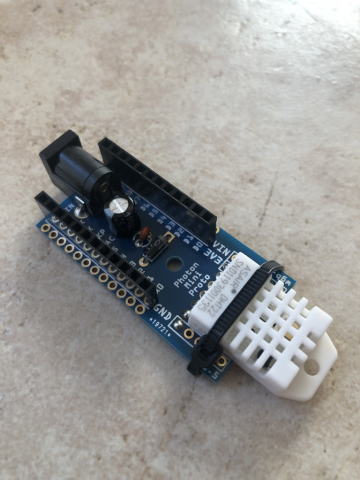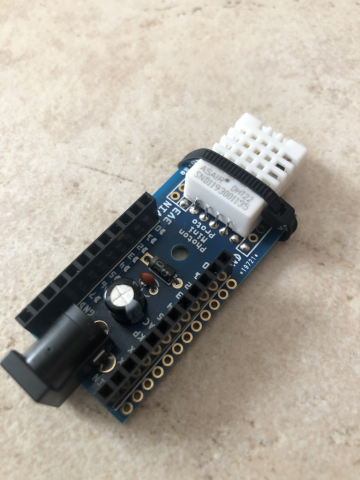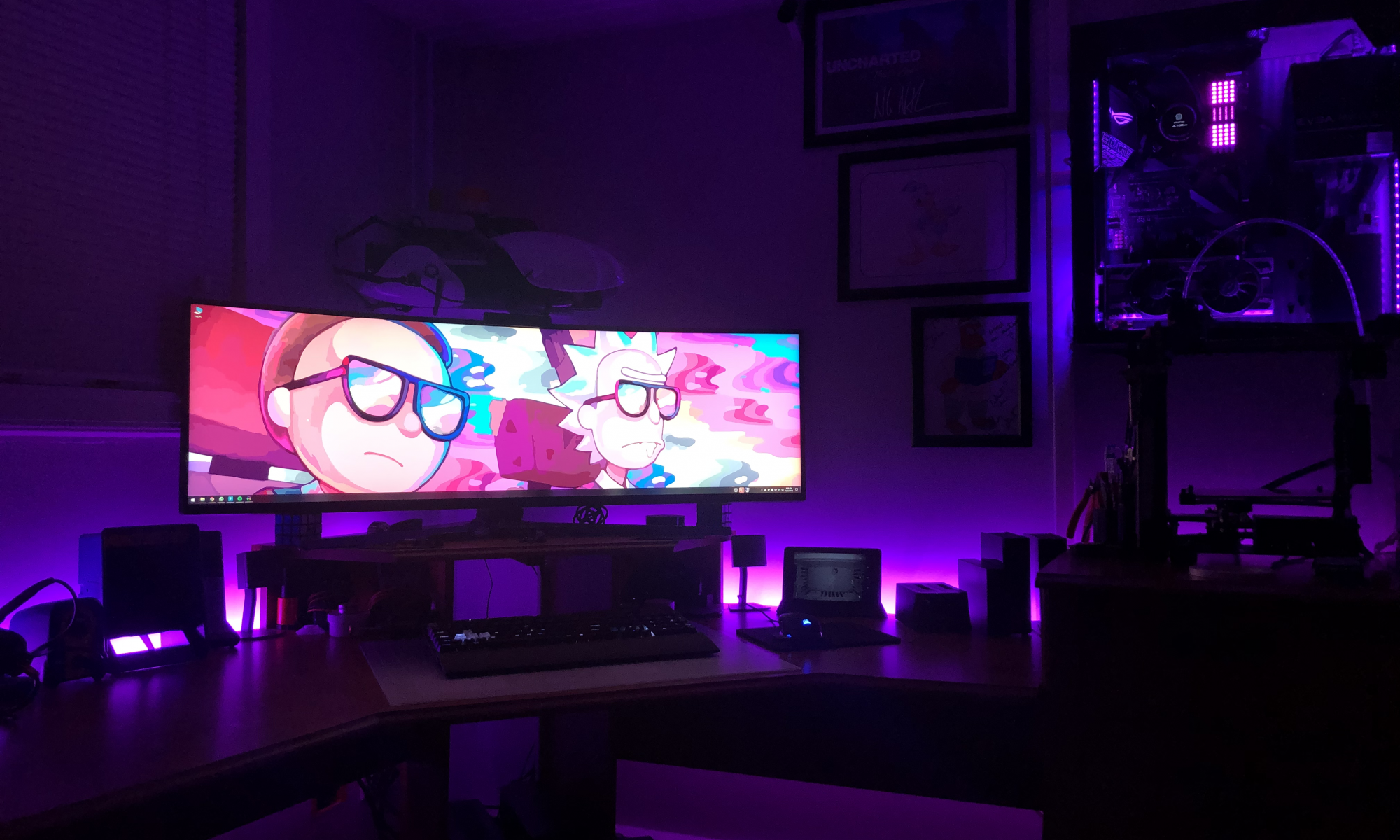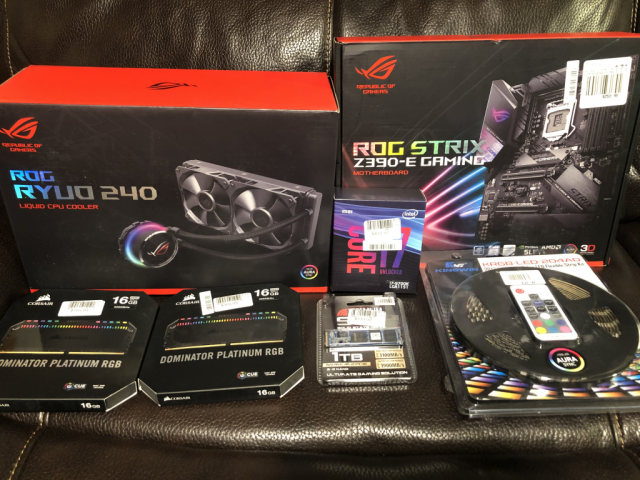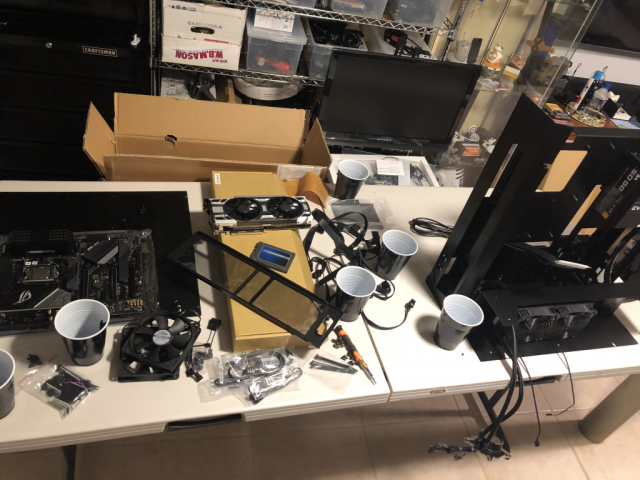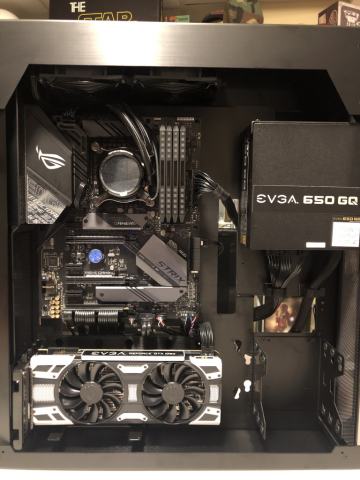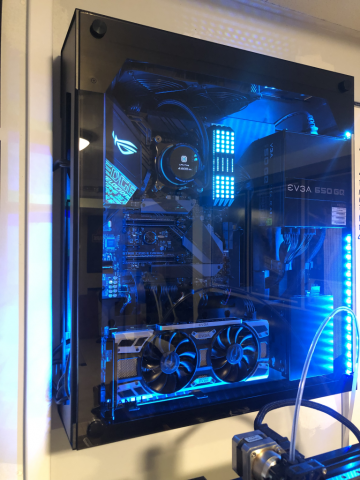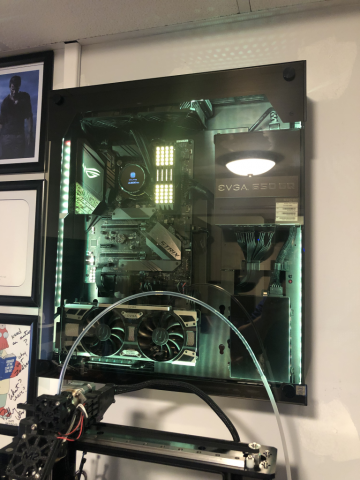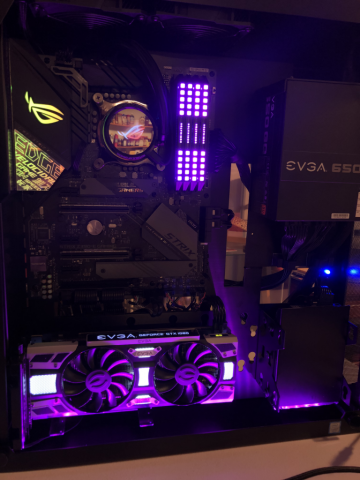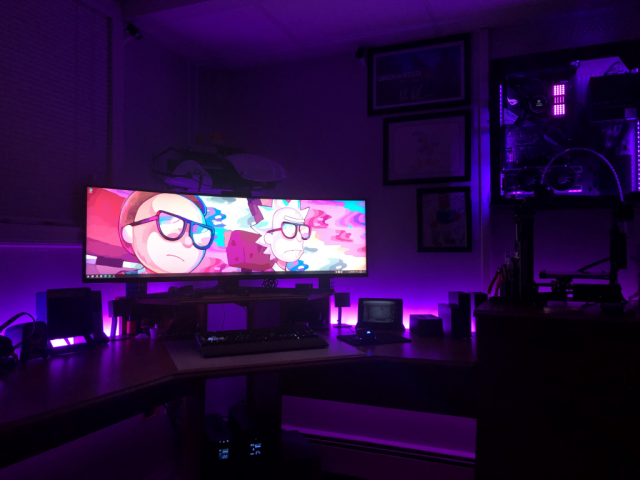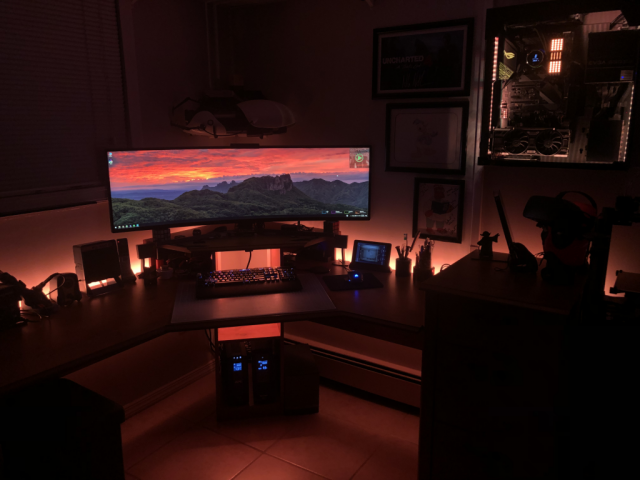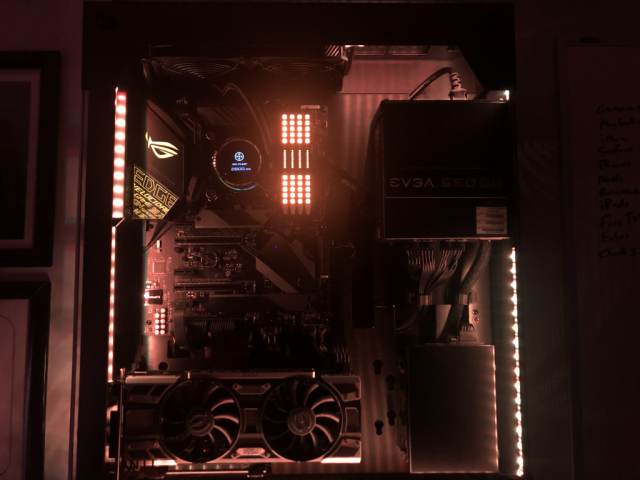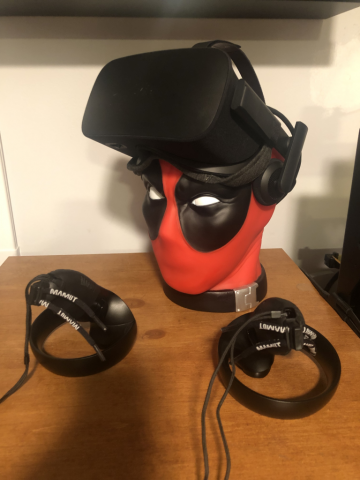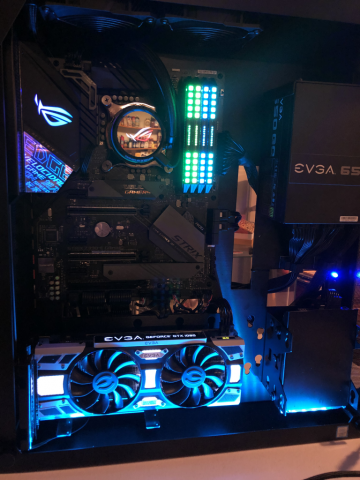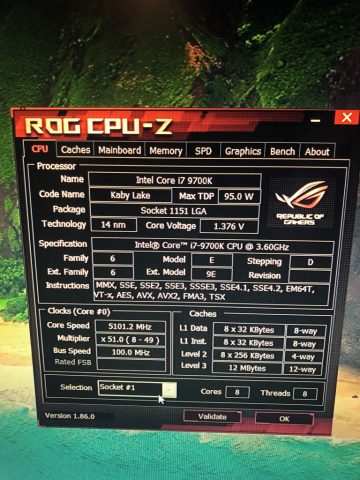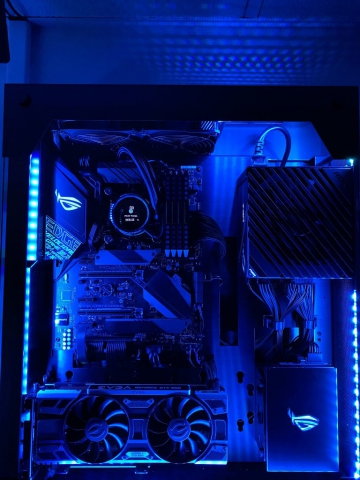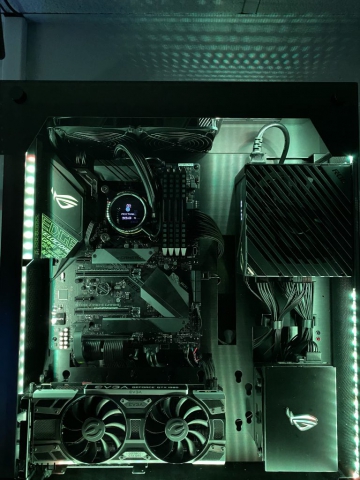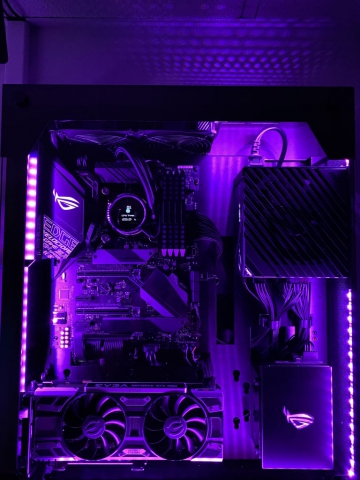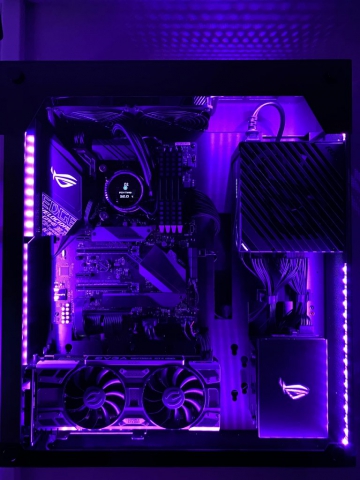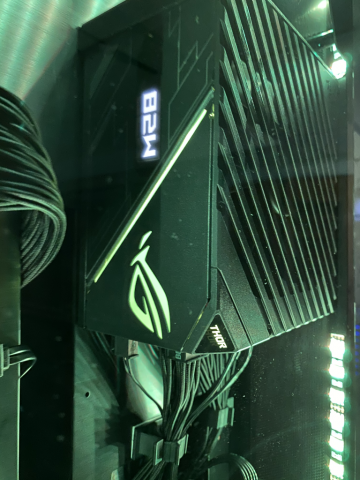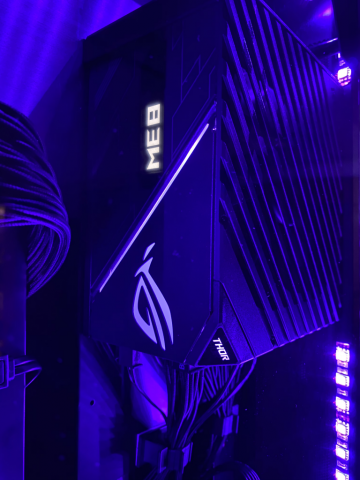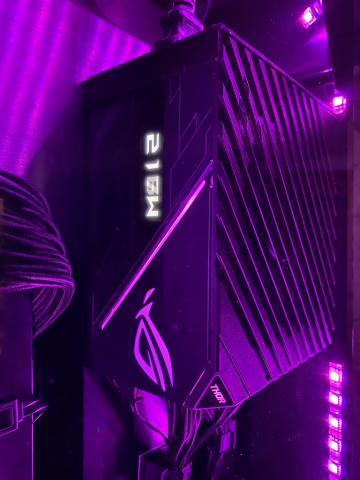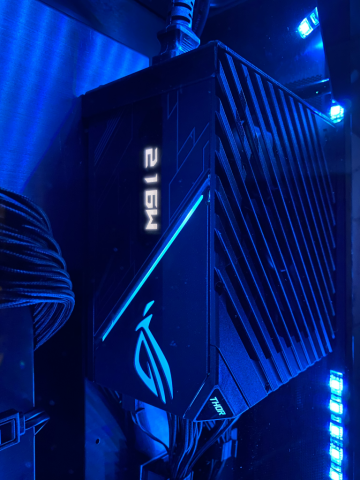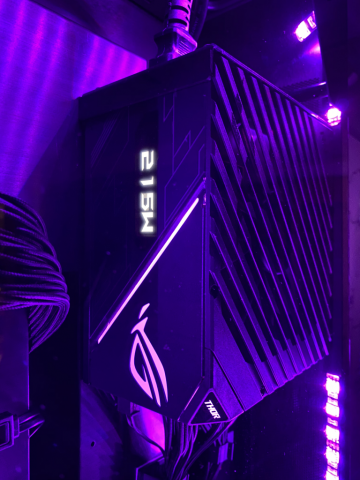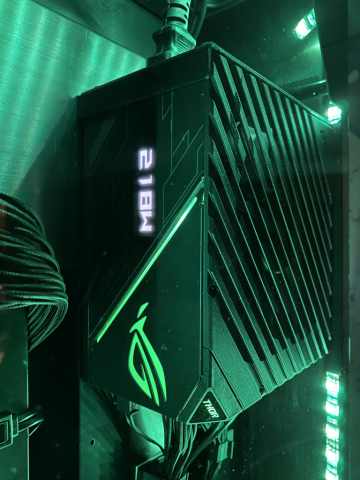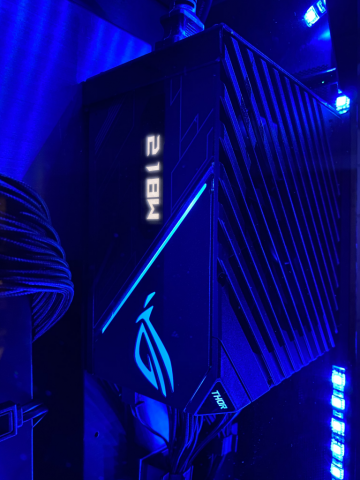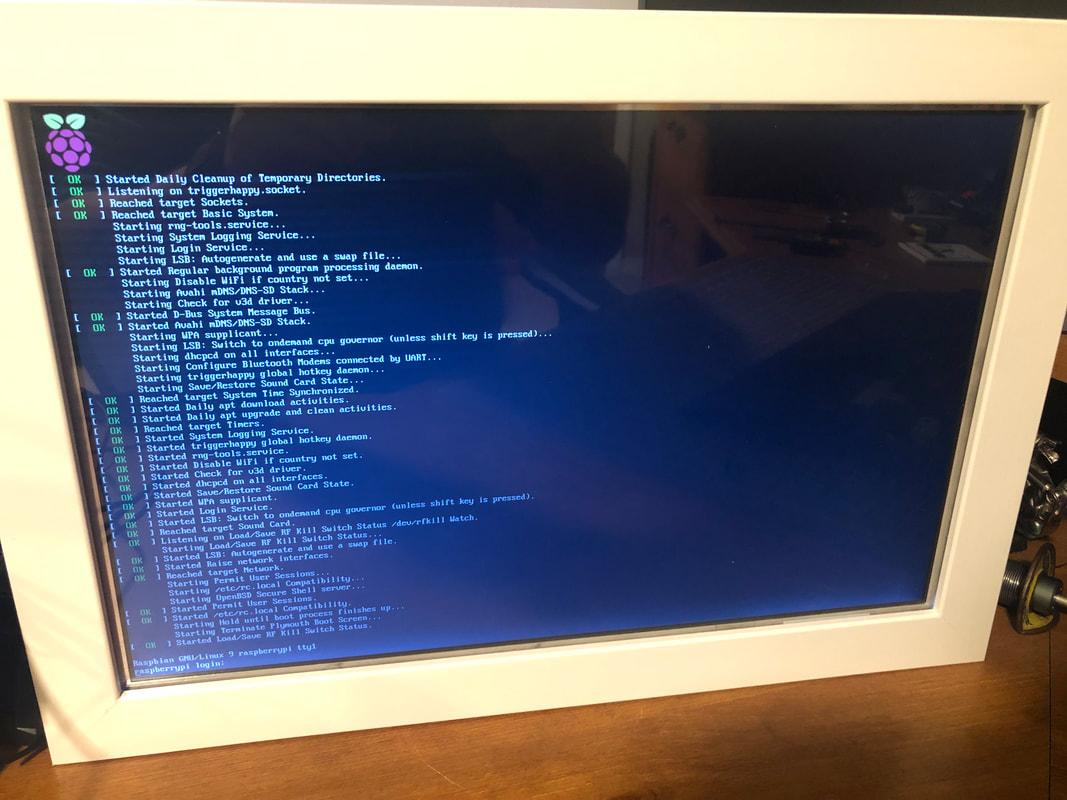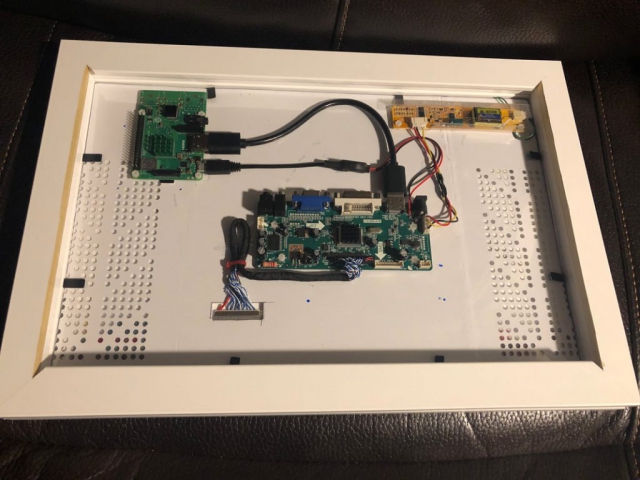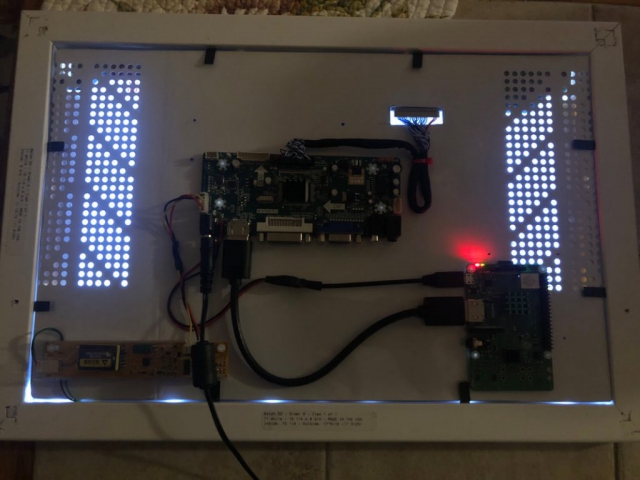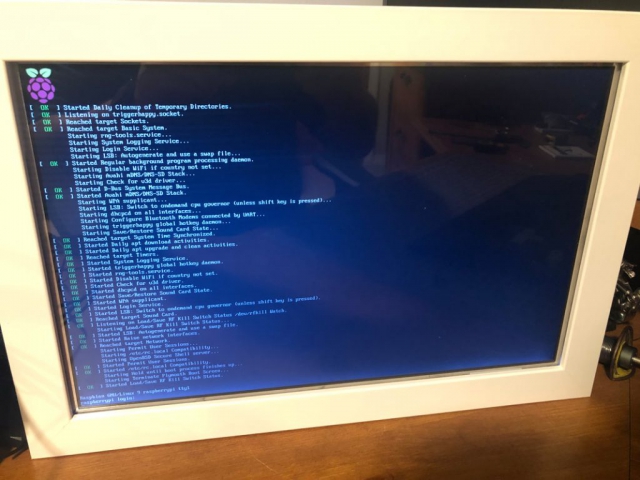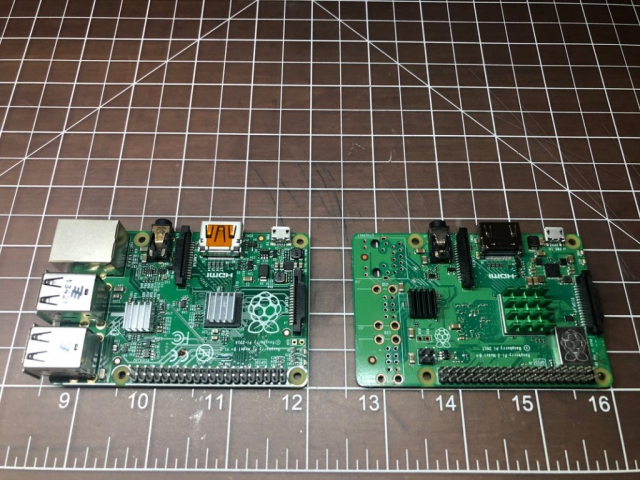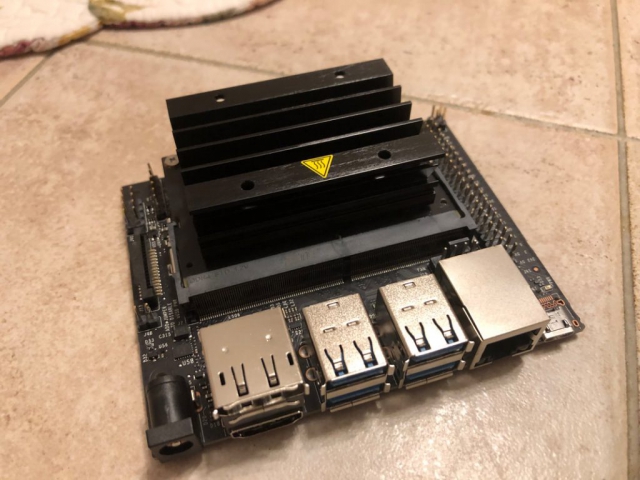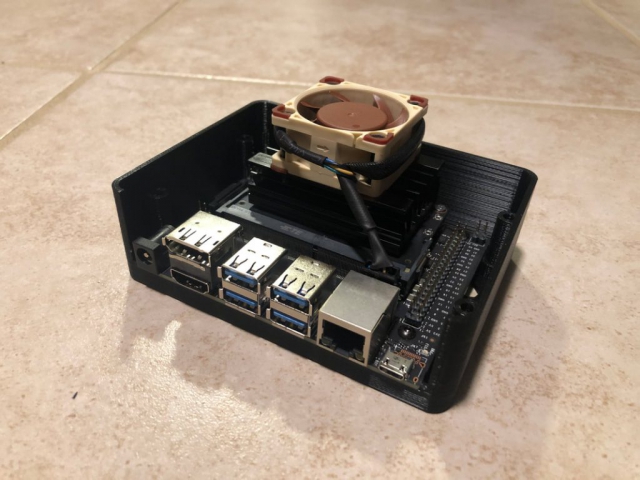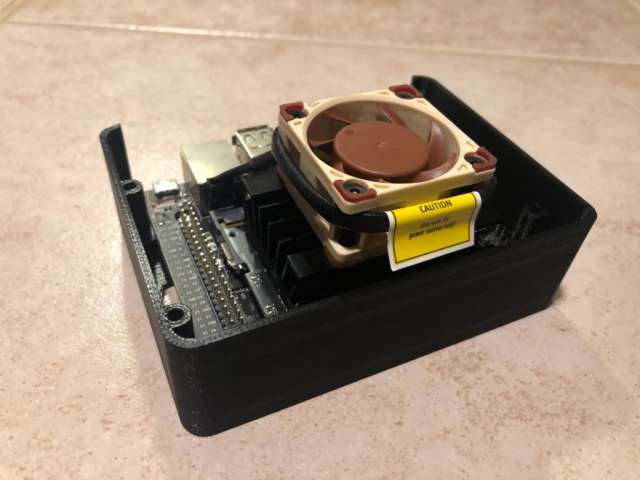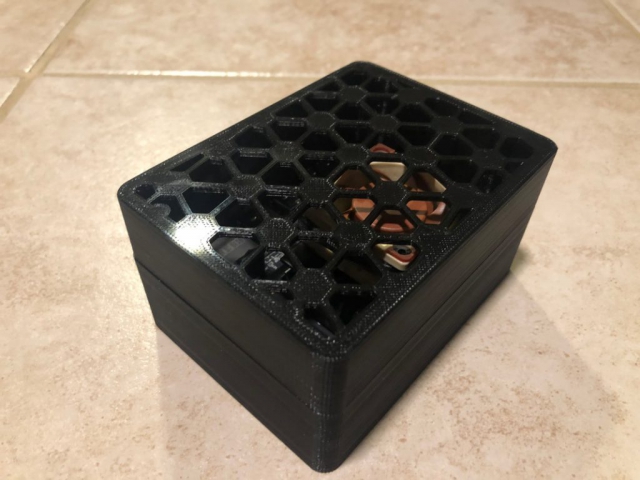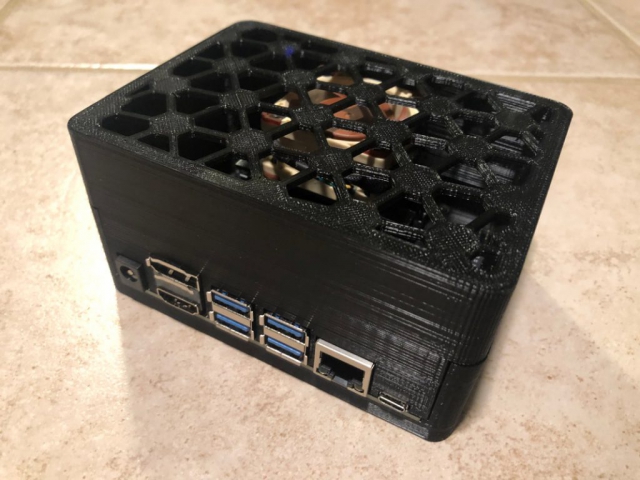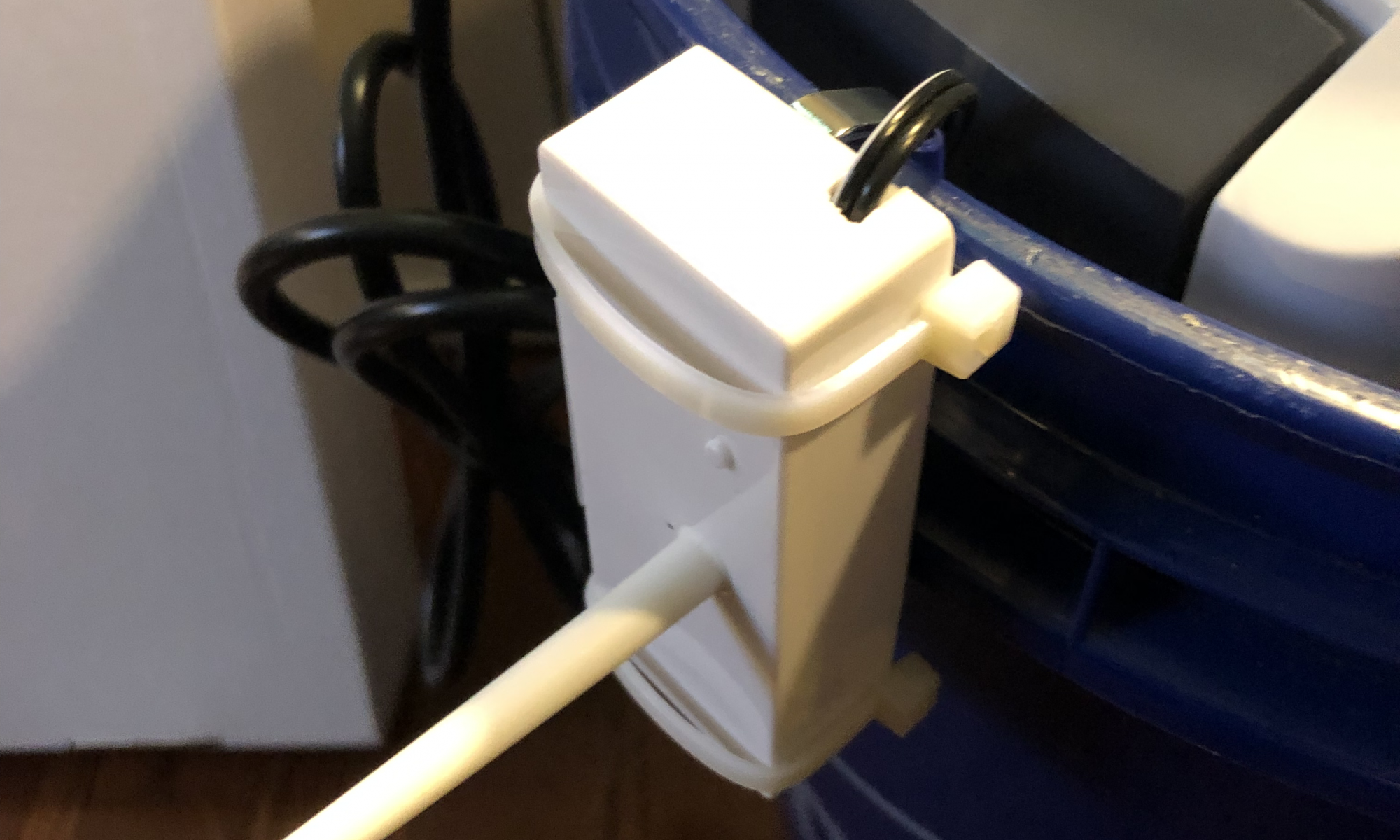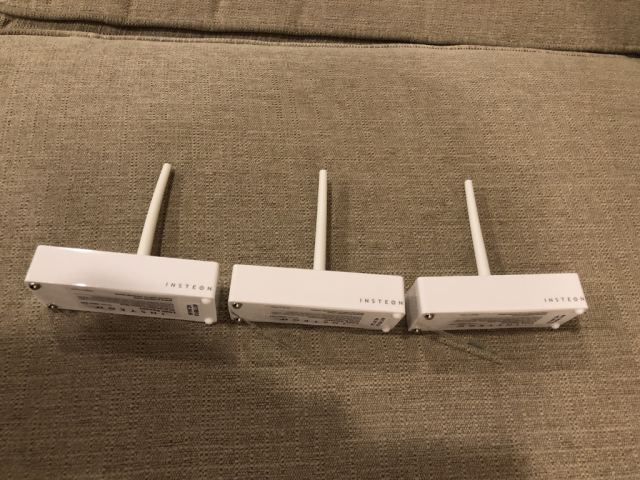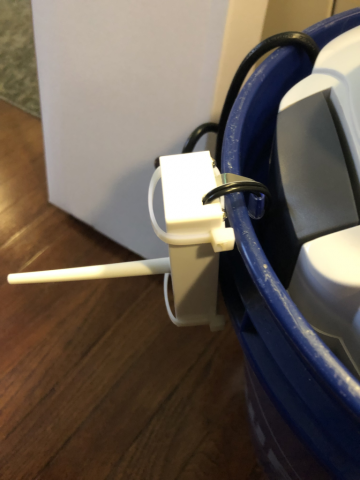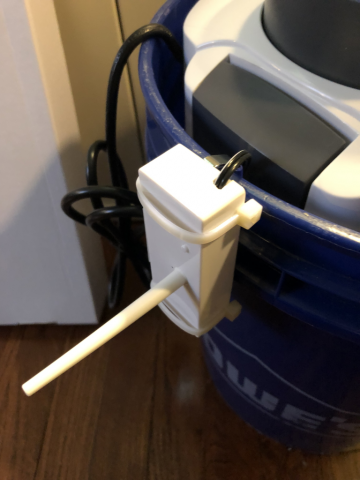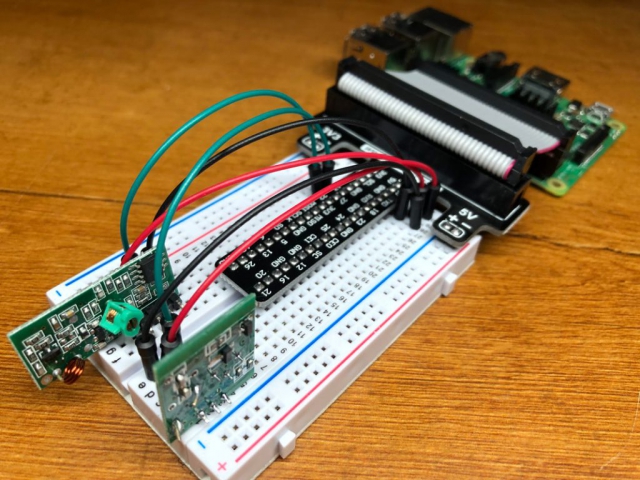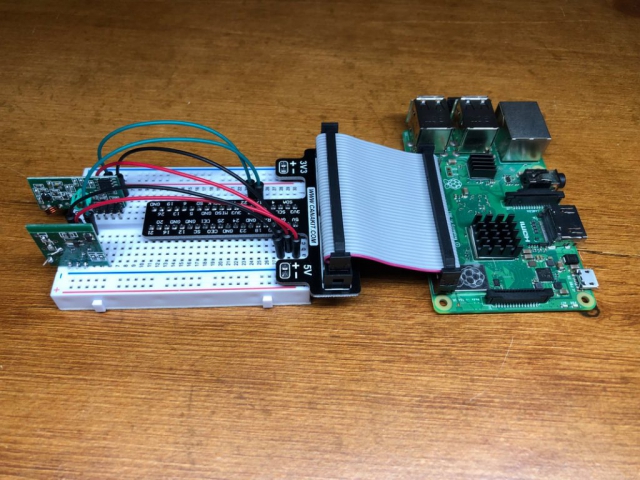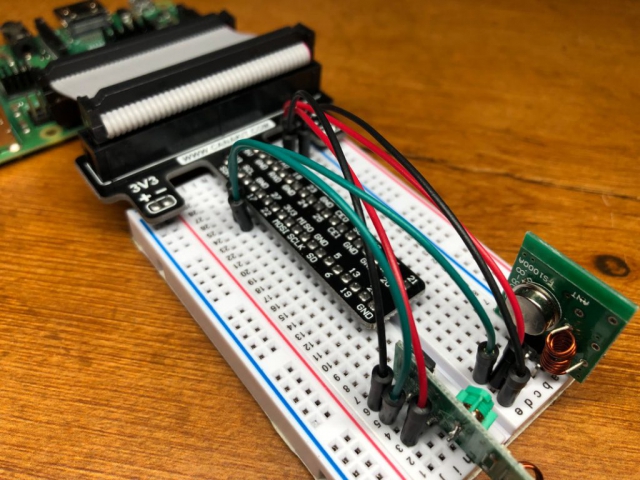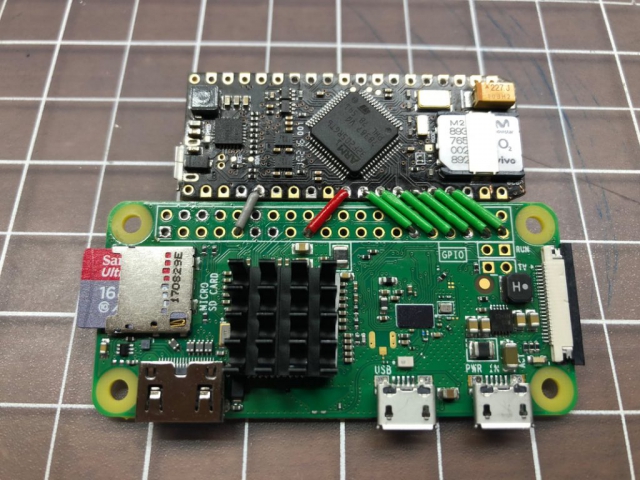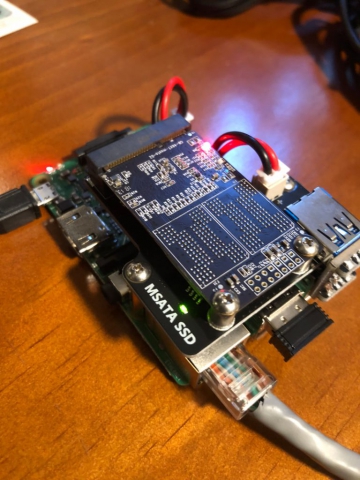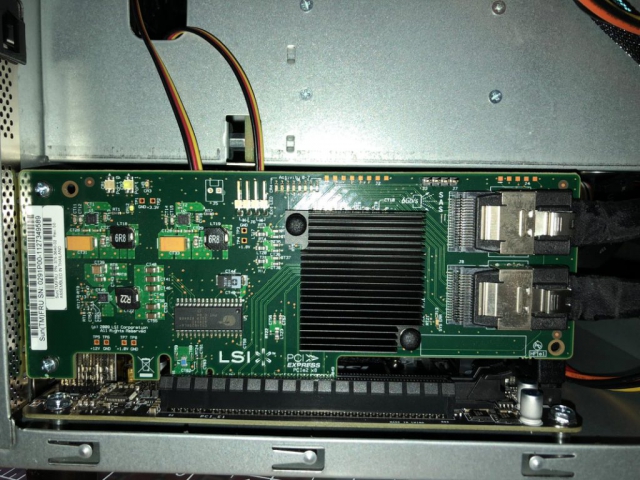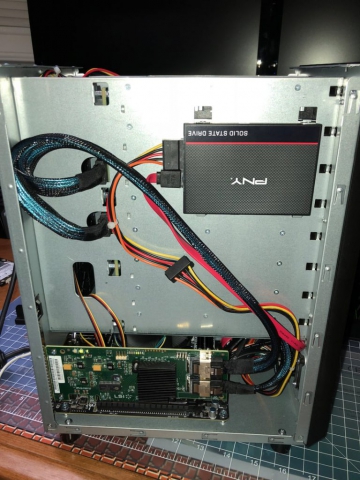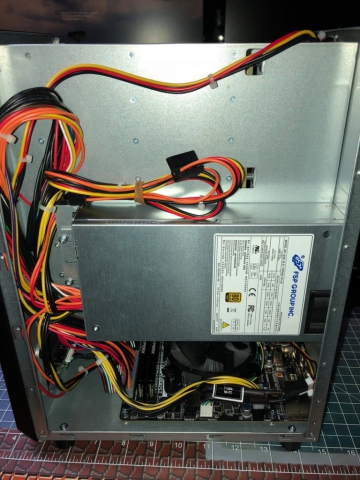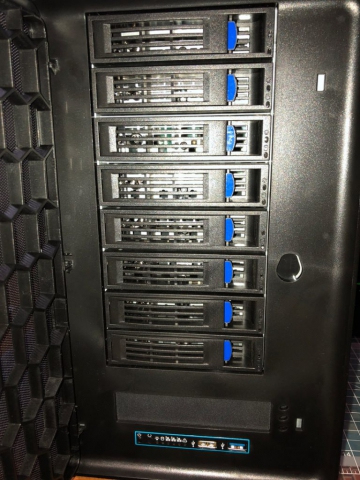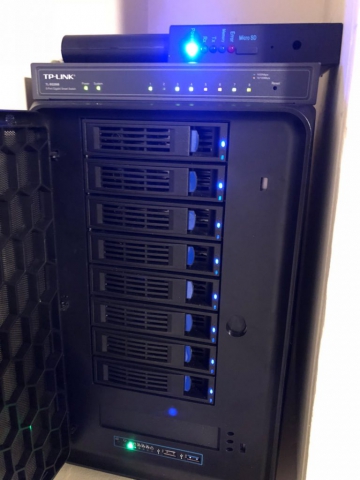A friend and coworker started to get into Ardunio once I showed him the Particle line of devices. He had the SoC on a Breadboard with wires going from the pins to the temperature sensor. I found these ProtoBoards for a few dollars each and offered to solder them.
New PC
I like to wait a generation before upgrading my PC at home. I know I’m not on the cutting edge that way, but I get a pretty nice discount on the hardware and mostly the firmware and software has the bugs worked out. This PC is the top of the line for the last gen hardware and it was well worth the wait. Deadpool holds on to the VR HMD.
Pi Magic Mirror
Nvidia Jetson Nano Plex Server
Leak Sensors
While I’m confident that my canister filters are pretty well sealed for my Aquariums, it’s always nice to have peace of mind. I placed the filters in Lowes buckets to try and catch any leaks as they happen but I realized that the area for that water was not enough if the tank gravity fed out the water. I added Insteon Leak Sensors and some sensor wire extensions to monitor the buckets. This way I can get an email that my house is about to be flooded.
Pi 433Mhz
Pi Cellular
One example is if the house loses Internet (the Pi can’t ping a webpage), I get a notification on my cell phone. Another reason is if the house loses power, (the Pi turns off), the Electron sends another notification since it’s on a battery backup.
This Pi also has a USB modem attached to it, and using NCID, I’m able to receive a notification of who is calling my house phone on my cell phone.
Pocket Oscilloscope
Pi Zabbix
FreeNAS Server
Building in-home storage now-a-days is a must. The digital age comes with a ton of data. Backing up documents and computers on the network is a necessity. I decided to go with FreeNAS because it is based on FreeBSD and uses ZFS for it’s filesystems. I built out a very large storage array to future proof myself a bit, and at this time, I still have yet to use 50% of my storage yet. I also left myself the option of upgrading the hardware, adding more RAM or a faster CPU so I could grow as it needs.


